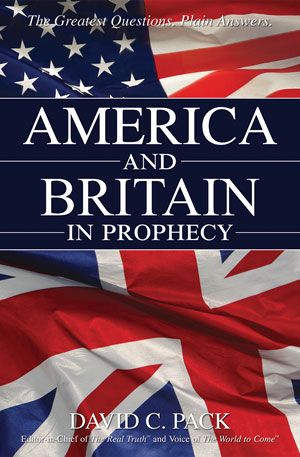After years of watching England increasingly turn Protestant and assert more dominance in Europe and the New World Americas, King Philip II of Spain had enough.
In 1588 he determined that if the island nation was willing to buck against the authority of his globe-spanning empire and of the Catholic Church, then it would have to face his “invincible” Armada.
It was the largest fleet known to Europe until that time: 130 ships armed to the teeth with 2,500 cannons, carrying 8,000 seamen and 19,000 soldiers. The overwhelming force sailed north to crush England’s fleet, depose Queen Elizabeth and bring the Protestant Church of England back under Catholic control.
Some vessels even carried Catholic priests eager to evangelize and horses for them to ride so they could spread their religious message throughout Britain. The creation of an inquisition—a tribunal established to convict those who did not support Catholic doctrines—loomed, likely resulting in persecution, torture and martyrdom.
King Philip’s pro-Catholic mission received full support from Pope Sixtus V. According to historian Stephen Alford in The Watchers: A Secret History of the Reign of Elizabeth I, the pope promised to pay money “on the landing of the Great Armada in England” and “once the kingdom was captured.” He also told King Philip he could choose someone to replace the queen.
Had Spain established a Catholic dynasty across Europe in 1588 as planned, the unchallenged nation would have eventually conquered North America and much of the rest of the world. To put a Spanish victory in perspective, consider the present-day impact it would have had if you live in an English-speaking country now: Spanish would be your country’s main language; the King James translation of the Bible that you use at Sabbath services would likely not exist; freedom of religion, which allows God’s Work to be done today, would not have been established.
The English fleet was outnumbered and outmanned by the larger Spanish fleet. Yet a series of “unfortunate events” on Spain’s naval force gave England the upper hand in the end, and saved the kingdom from absorption into the Spanish empire and Catholicism.
God is not a respecter of persons (Acts 10:34). He created and cared about the people on both sides of this battle. Yet He had far greater implications in mind, which made necessary His intervention on behalf of England at the time.
Genesis 35:11 states that the descendants of Jacob would become “a nation and a company of nations.” Jacob then passed down this blessing to his grandchildren Ephraim and Manasseh in Genesis 48:19. The U.S. clearly became the single greatest nation on Earth while the British Empire was a great “multitude of nations.” In order to fulfill this extraordinary prophecy, God had to alter major historic events.
Though you are living more than 400 years after this momentous battle, it should be incredibly inspiring that you know the living Being behind the words in the Bible. God shows through His interventions in history that He is all-powerful—capable of engineering events to fulfill His will. Even when the most powerful navies and nations are thrown in His way, He can easily triumph over the purposes of men.
The story of how God saved England from “assured destruction” should encourage those who rely on Him to know He will keep His promises of protection. Follow closely to appreciate how, through a series of unexpected events, God foiled King Philip’s plan—and cleared the way for the Work He is doing on Earth today.
Prelude to Invasion
Conflict between England and Spain first arose when English King Henry VIII broke his nation away from the Roman Catholic Church in 1534 to form the Protestant Church of England.
While the formation of a new church may not seem significant, the initial split started a spiral of events that eventually resulted in thousands of false Christian denominations seen today. This was offensive to the Catholic Church, which believed it was the only true church and that its head, the pope, was God’s representative on Earth.
After King Henry’s death, his daughter Mary I, herself a devout Catholic, tried to reverse things during her rule as England’s first queen. Her plan included marrying King Philip II of Spain. Her zeal for Catholicism resulted in her having hundreds of Protestants killed. This led to her being known as “Bloody Mary.”
Mary died within five years of taking the throne, which allowed Henry’s second daughter, Elizabeth, to succeed her. Elizabeth was loyal to her father. During her reign, she refocused the nation on following the Protestant Church of England.
In the meantime, a largely Catholic Europe became enraged with England’s “heretic” ways and its refusal to adhere to the larger church’s beliefs.
King Philip was stirred to act after hearing about England’s raids on Spanish settlements in the West Indies. This led him to accept an invitation by Pope Sixtus to conquer England and once again make the nation wholly Catholic. At the time, Philip saw England as “the greatest threat to Spanish global interests,” according to author Stephen Alford.
King Philip’s men made plans to capture the city of London. After two years of preparation, the experienced Marquis of Santa Cruz was to lead the attack by the Spanish Armada in 1587. Logistical difficulties, however, including damage caused by a cyclone, resulted in an even longer wait. Then Marquis himself contracted typhoid fever leading to his death early next year.
This forced King Philip to put the inexperienced Duke of Medina Sidonia in charge of the Armada. It finally set sail for England in May 1588.
But there was another delay. A storm battered the fleet and forced it to stop for repairs. Damage from the severe weather completely sidelined five of the heavy warships from the battle.
The Armada reached the English Channel on July 19. A system of beacons on England’s southern coast brought news to London: It was time for battle.
The Favor Tilts
Historian Harry Kelsey described each side of the naval encounter in his book Sir Francis Drake: The Queen’s Pirate: “Spanish fighting ships carried large numbers of soldiers ready for hand-to-hand combat. English ships, on the other hand, relied on heavy firepower from guns that had greater range than did comparable Spanish artillery. English master gunners also had developed a tactic of positioning their artillery to fire low, striking enemy ships in the hull, close to the waterline. So English fighting ships preferred to fight their enemies at as great a distance as possible, pounding their targets with heavy artillery. Spanish commanders wanted close combat, where their soldiers could swarm over the other ships and capture them in hand-to-hand fighting.”
Although England certainly had a fighting chance, there were plenty of “unusual” circumstances that turned the battle away from Spain’s favor.
In addition, when the Armada first reached English waters on July 19, the Duke of Medina Sidonia overlooked and passed Plymouth where England’s fleet was stationed, opting instead to head toward the Isle of Wight. This choice gave the English enough time to send their ships into the rough waters of the English Channel.
“In the face of contrary winds and currents it was necessary for each ship to send out a small boat to drop the anchor as far ahead as possible…The ship was then drawn forward on the anchor cable and the whole process repeated,” Mr. Kelsey added.
“By the afternoon of 20 July the English fleet had fifty-four ships out of the harbor…where they could see the Armada but could not be seen themselves. It was hard work, and it was not over…About 2 A.M. on Sunday…the wind began to shift, and by dawn…they had gained the wind of the enemy.”
This was just one of many instances in which the winds shifted.
In his book, Mr. Kelsey documented how weather changes and other unexpected events worked in England’s favor during the next several days.
July 21-22: Spanish ship San Salvador strangely blew up, most likely after being sabotaged by a German crew member. A second of its ships, Nuestra Senora del Rosario, collided with a third, Santa Catalina.
In addition, strong winds from the west separated the Rosario from the fleet. The boat was eventually abandoned by the Armada, its crew left to fend for themselves. Around the same time, Sir Francis Drake, who was supposed to lead the charge against the Armada and light the way for other ships, disobeyed orders, extinguished his lantern, and followed the Rosario. This left the English fleet without anyone to lead them but put Drake in a strong position to conquer a critical Spanish warship.
According to Mr. Kelsey, though, Drake maintained that his finding of the Rosario was actually an accident.
“He had gone off to investigate some suspicious-looking ships, found that they were innocent German merchantmen…waiting for daylight,” he stated in his book. “As dawn broke—and much to his surprise—there was the Rosario, two or three cables [less than half a mile] away.”
Astonishingly, the captain of the Rosario surrendered without a fight—though he had about 350 men with him and 46 cannons!
July 24: A northeast wind seemed to favor Spain’s fleet, yet the English prevailed without any explanation other than that the winds shifted. Mr. Kelsey wrote: “As the English fleet moved toward shore, the Spanish came down to intercept them. Several Spanish ships moved in close…and the Regazona [a Spanish ship] came very close to the Ark Royal [a British ship], which immediately moved…out to sea. The Nonpareil, the Elizabeth Jonas, and the Victory then came up to assist the Ark Royal, but help proved to be unnecessary as the Spanish ships were forced south by the Portland Race tidal current and fell astern of [behind] the English vessels.”
By then, he continued, “The English commander was…becoming aware of the tactical differences between his own disorganized fleet and the highly disciplined Spanish Armada.” This gave the British much-needed time to organize their ships while the Spanish regrouped.
July 25: As both sides started a furious exchange of gunfire, “Medina Sidonia engaged the Triumph [led by squadron commander Martin Frobisher] in a gun duel and for a time thought he had the ship disabled. The Spanish ships were closing in…when the wind picked up a bit, and Frobisher sailed clear around the Armada. He was too fast for them and managed to escape with very little damage” (ibid.).
Shortly after, the English decided to send ships to where the Armada was anchored in order to set it on fire. But the English were highly disorganized and set some ships on fire too early, which gave their plan away.
However, the Armada’s leader “ordered his captains to move out of the way, and in something approaching panic, the Spanish ships simply cut their mooring lines and sailed off.”
“Every one of the [English] fire ships drifted ashore without exploding or setting fire to an Armada vessel. Even so, they accomplished their purpose” (ibid.).
In early August, after another strong wind carried the Armada northward, all hope of conquering England dissipated. Disease was beginning to spread and supplies running low, so the Duke of Medina Sidonia decided to return to Spain. As it rounded Scotland and Ireland during the return voyage, more storms ravaged more ships. Only 60 of the 130 original ships returned to Spain in the autumn of 1588, and 15,000 died.
England went back to land as victors after having defeated the “invincible” Armada.
Mighty Hand at Work
In The Spanish Armada: Revised Edition, Colin Martin and Geoffrey Parker recorded that there were references by those at the time attributing Spain’s defeat to God. In one case, the Spanish ambassador in Rome wrote to one of the commanders that the outcome “was God’s will” and not his “fault.”
The authors quoted Jesuit Pedro de Ribadeneira, who was on the side of the Spanish: “The judgments of God are most secret, so that we cannot know for certain the purpose of his Divine Majesty in the extraordinary fate He has decreed for the king’s powerful fleet. Nevertheless, seeing that the cause was so much His, and was undertaken with such a holy intent, and was so much desired and assisted by the whole Catholic Church, the fact that He was not moved by the pious prayers and tears of so many and such great devotees makes us fearful that there are serious reasons why Our Lord has sent us this affliction…so that it is both necessary and advisable to seek and consider the causes that may have moved God to punish us in this way.”
Even a devout Catholic could see a Spanish victory was not part of God’s divine purpose!
In The Watchers, author Stephen Alford added: “It was a positively miraculous deliverance. Queen Elizabeth ascribed victory, not to the weather, but to the agency of providence.”
While God does not advocate war nor has “pleasure in the death of him that dies” (Ezek. 18:32), He clearly guided the outcome of this battle for a greater purpose.
Trust God’s Word
Events that culminated in the defeat of the Spanish Armada were more than just an English victory. They were part of a pivotal event that cleared the way for the beginning of the resurgence of God’s Work.
This intervention further proves God’s Word, which states, “The Eternal wrecks the purposes of pagans, He brings to nothing what the nations plan; but the Eternal’s purpose stands forever, and what He plans will last from age to age…The Eternal looks from heaven, beholding all mankind; from where He sits, He scans all who inhabit the world; He who alone made their minds, He notes all they do” (Psa. 33:10-15, Moffatt).
It was not God’s purpose for the Catholic Church and the pope to rule England. That would have impeded the translation of the Bible into English, inhibiting religious freedom in America where God’s Work is headquartered today. It also would have stopped Britain from emerging as a world power, thereby stopping God’s promised birthright blessings to be given to it and the United States in the 1800s. (Learn more about these promises in Mr. Pack’s book America and Britain in Prophecy.)
Now make this miraculous outcome personal. God acted in England’s favor to fulfill His promise to Jacob’s descendants (Gen. 17:6). This is significant to you, a child of one or two parents who entered into a spiritual covenant with the same God. Never doubt that this Being is on your side and will work things out in your favor if you ever face unexpected danger. As you keep His laws, you have nothing to fear in this world.
This knowledge should also inspire you in that you do not have to be confused or intimidated by prophecy. The apostle Peter wrote: “We [the Church of God] have also a more sure word of prophecy; whereunto you do well that you take heed, as unto a light that shines in a dark place” (II Pet. 1:19). God’s Church is given the right prophetic understanding so we can “take heed”—prepare for what will happen.
The Bible has more astonishing prophecies yet to come, including about how God will protect you. The Spanish Armada’s defeat serves as solid proof that when God says He will bring something to pass—He will!

















